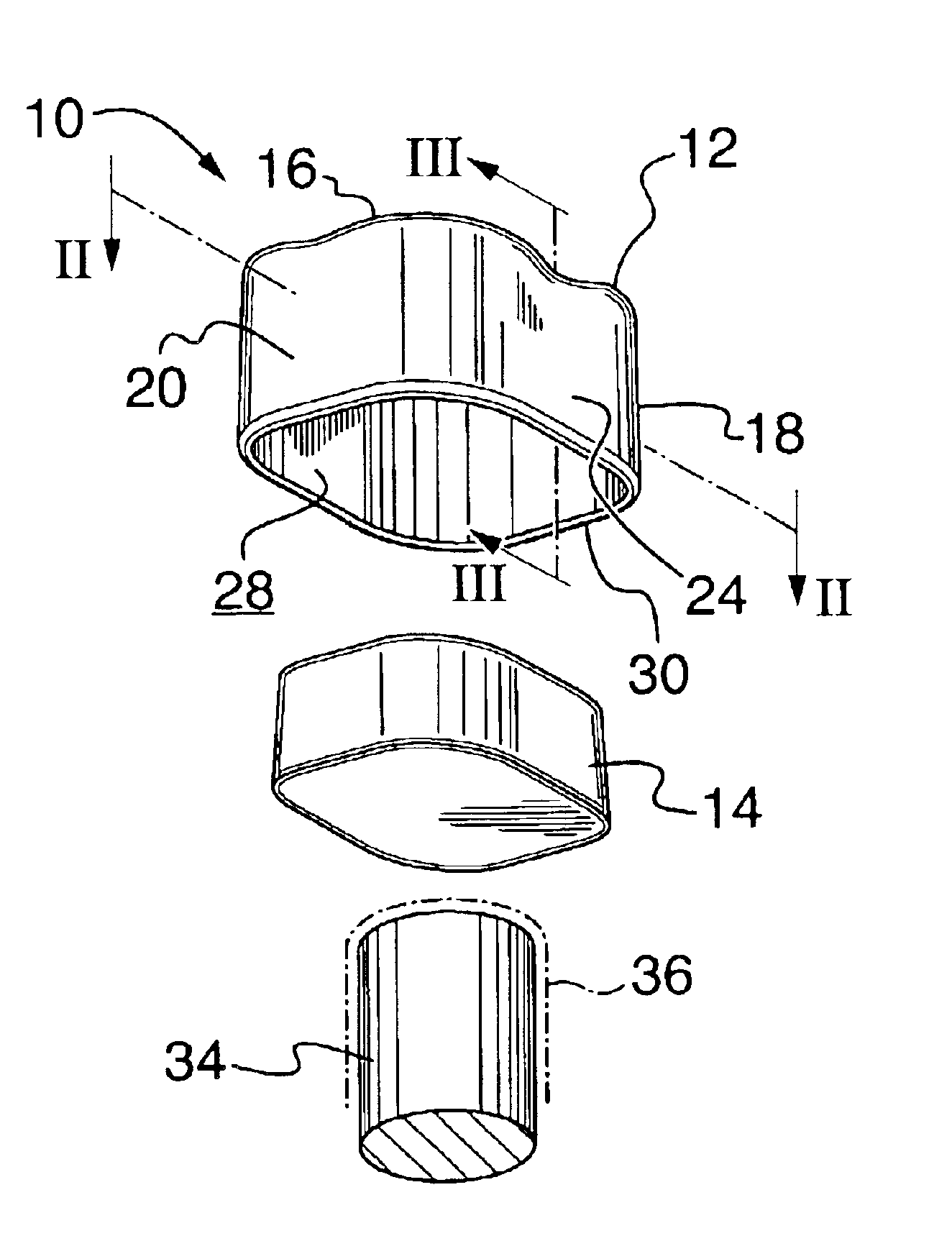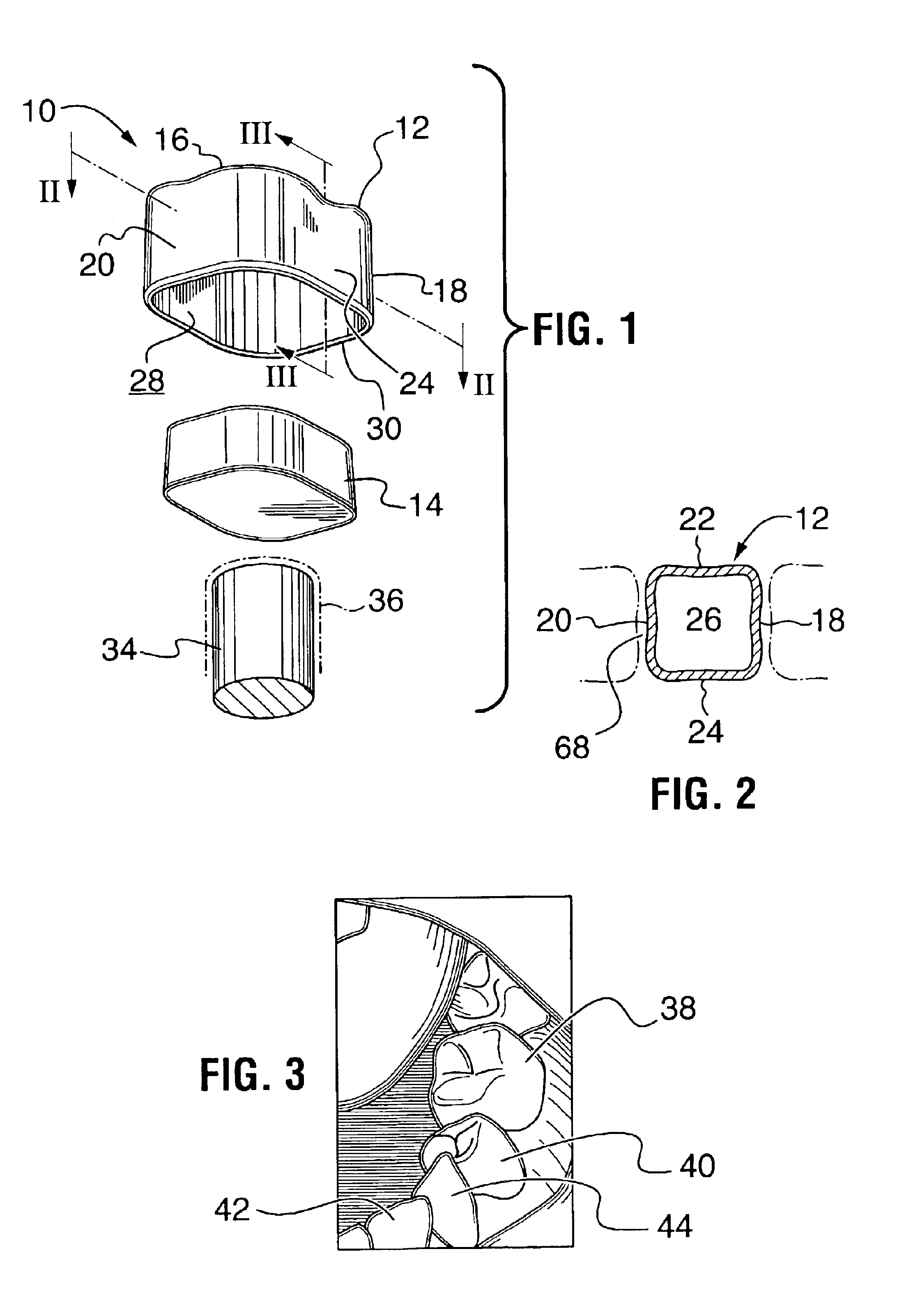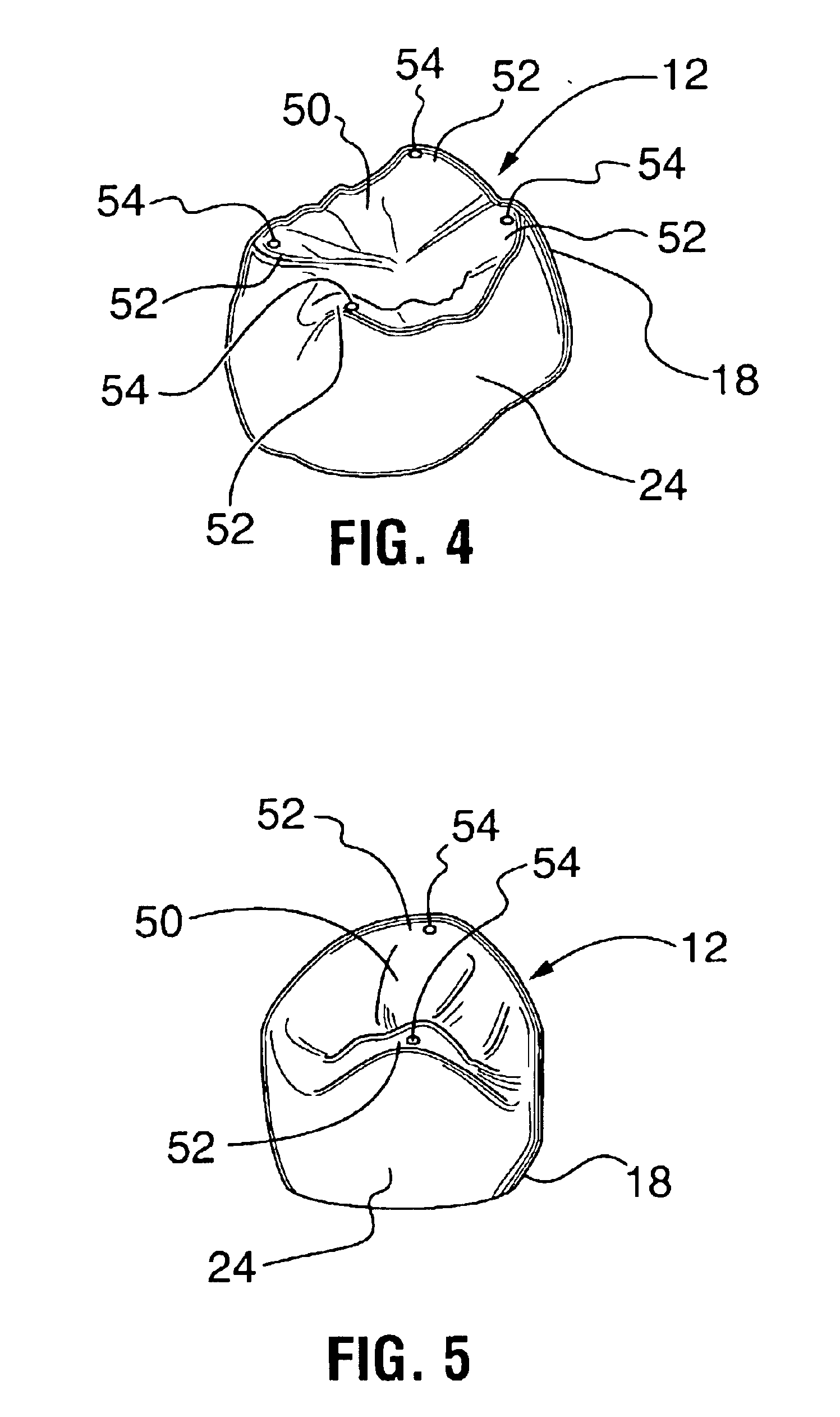Temporary and semi-permanent dental crowns
- Summary
- Abstract
- Description
- Claims
- Application Information
AI Technical Summary
Benefits of technology
Problems solved by technology
Method used
Image
Examples
Embodiment Construction
[0053]A temporary crown, generally indicated by the reference number 10, has a crown form 12 and a resin filler 14 (FIG. 1 and 2). The crown form 12 has a bite layer 16 that is integral with two neighbour walls 18, 20, a lingual wall 22 and a buccal wall 24 to define a cavity 26. The walls 18, 20, 22 and 24 have a gingival margin 30 distal to the bite layer 16. The cavity 26 accepts a tooth stub 34 and the resin filler 14 fills a void (not shown) between an inner surface 28 of the crown form 12 and the tooth stub 34. A temporary adhesive 36 is optionally applied to the crown form 12. Additionally, a color dye (not shown) is optionally applied to the inner surface 28 of the crown form 12 in order to color the temporary crown 10.
[0054]There can be a number of different types of temporary crowns 10, depending whether a molar 38, a bicuspid 40, an incisor 42 or a canine 44 is to be crowned (FIG. 3). Further, there are different shapes and sizes of temporary crowns 10, ranging in size fr...
PUM
 Login to View More
Login to View More Abstract
Description
Claims
Application Information
 Login to View More
Login to View More - R&D
- Intellectual Property
- Life Sciences
- Materials
- Tech Scout
- Unparalleled Data Quality
- Higher Quality Content
- 60% Fewer Hallucinations
Browse by: Latest US Patents, China's latest patents, Technical Efficacy Thesaurus, Application Domain, Technology Topic, Popular Technical Reports.
© 2025 PatSnap. All rights reserved.Legal|Privacy policy|Modern Slavery Act Transparency Statement|Sitemap|About US| Contact US: help@patsnap.com



